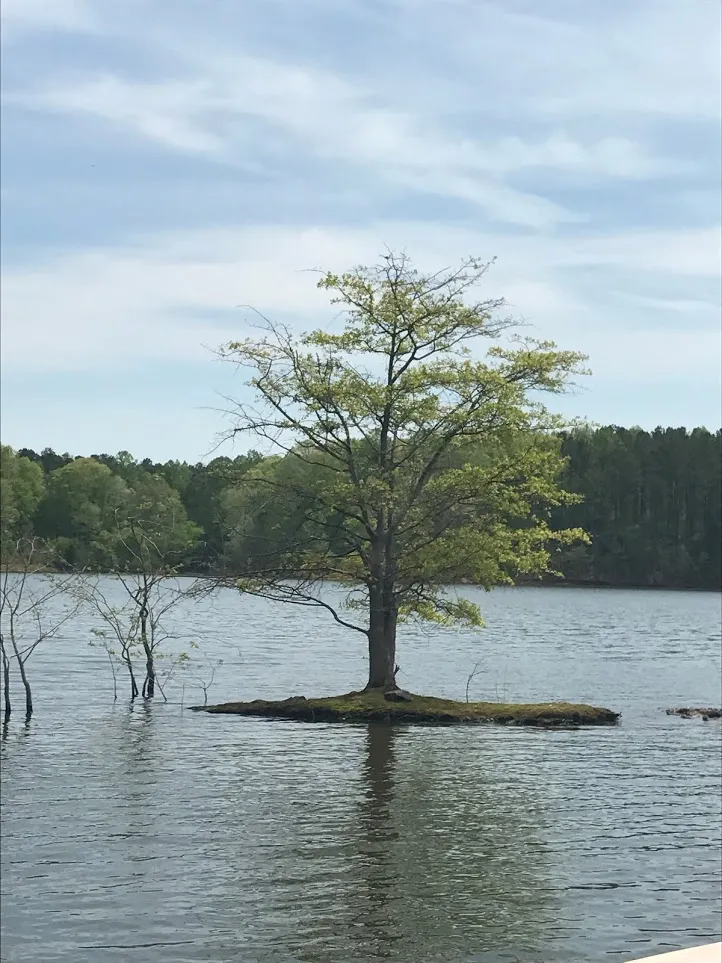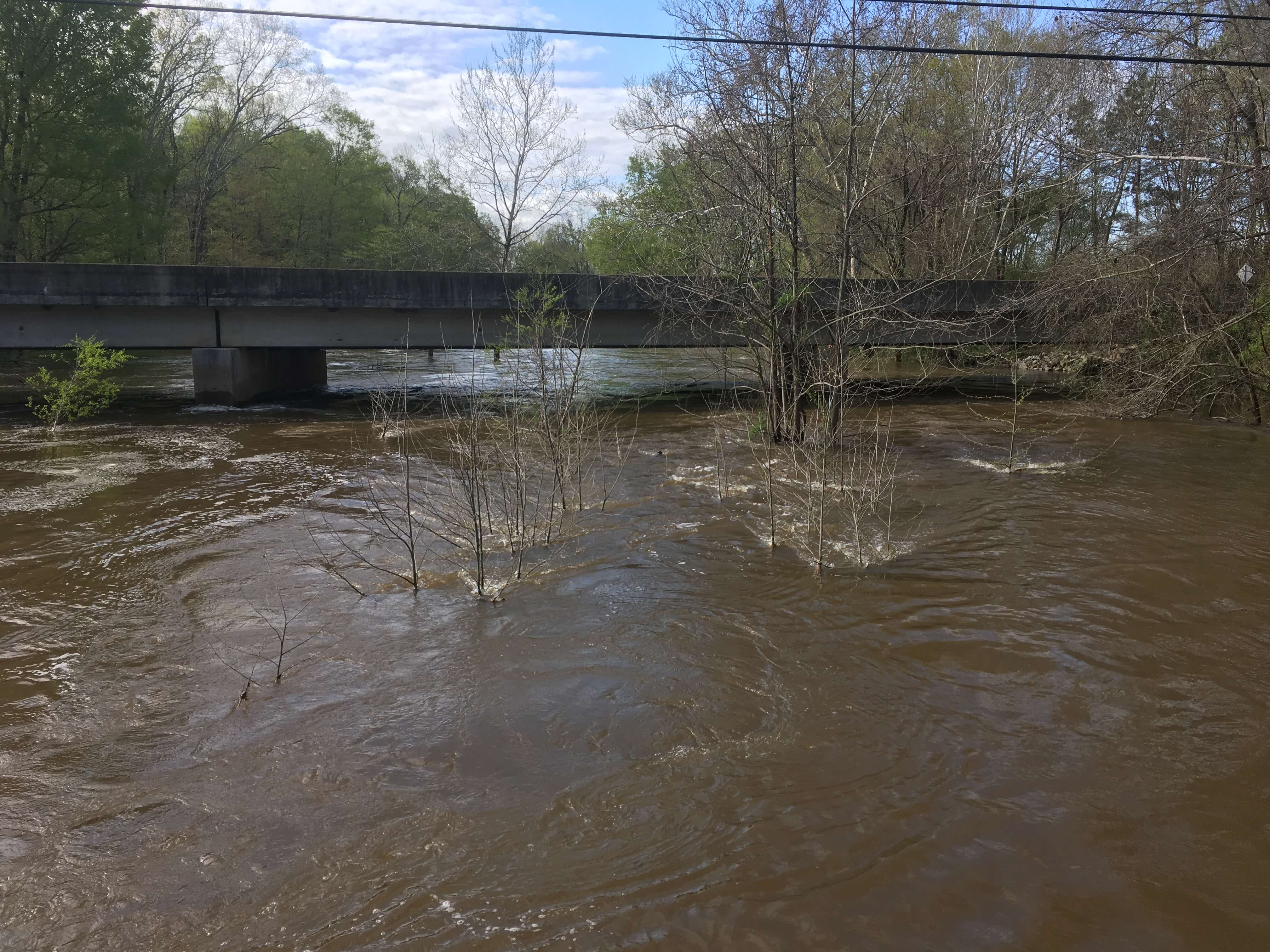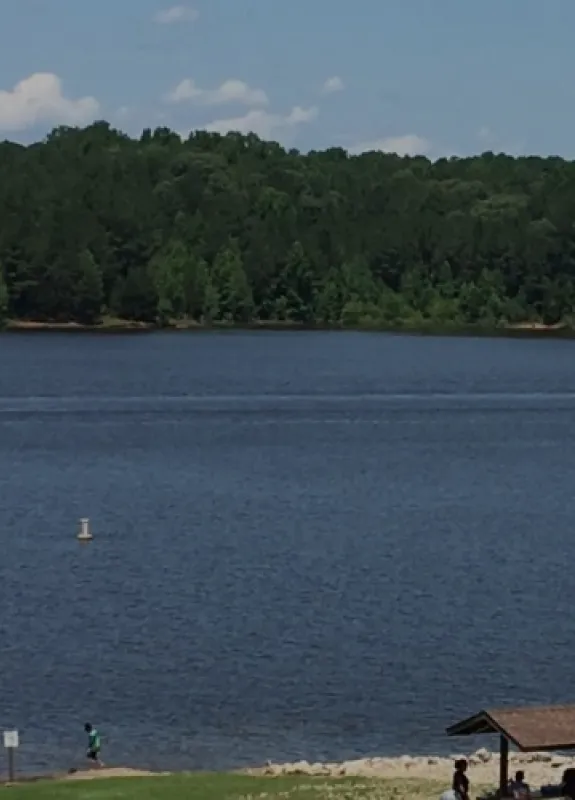Reexamination
Requirements
The 2011 Falls Lake Rules include an adaptive management provision. This section of the rules allows for a reexamination of the nutrient reduction requirements. The Rules require a minimum of three years of water quality monitoring. The Rules also require updated computer models to support a reexamination.
Requirements to conduct a reexamination under the 2011 Falls Lake Rules:
- Gain approval of study plans from the State
- Collect at least three years of water quality data
- Develop watershed and lake models
- Reevaluate nutrient load reduction targets
- Submit findings to the State
Framework
The UNRBA started preparing for their study in 2011. The Association developed plans to conduct the scientific studies. In 2014, the UNRBA began its four-year monitoring program. A main purpose of the monitoring was to update the models used to develop the Falls Lake Rules. Several other organizations have also studied Falls Lake and its watershed. Over 40 studies have been incorporated into the updated UNRBA models.
The UNRBA has studied this system for more than a decade. The NC Collaboratory also studied the lake and watershed for four years. Other organizations also collected monitoring data. These studies have provided exceptional scientific information about the lake and its watershed. Updated data and modeling show the lake cannot meet the NC chlorophyll-a water quality standard regardless of the nutrient load reductions achieved.
Need for Further Management
Implementation of the 2011 Falls Lake Rules by regulated entities has resulted in significantly lower nutrient loads reaching Falls Lake. To maintain progress and protect water quality, Falls Lake needs an updated nutrient management strategy. Without further management, water quality may degrade. Drinking water supply, recreation, and habitat may be adversely impacted. These risks are exacerbated by changing land use and weather patterns.
Protecting Falls Lake is critical. Existing activities must be mitigated and future changes responsibly managed. Effective, reasonable, ongoing actions are needed. The UNRBA recommendations for continued management are summarized here.

Unmanaged or natural areas, like forests and wetlands, make up 75% of the watershed. It is very difficult to reduce nutrient loading from these areas.
Many beneficial activitial like conserving forests or repairing malfunctioning septic systems don't count towards compliance under the 2011 rules.

Development and agriculture are 25% of the watershed. Most farms are implementing best practices to reduce nutrients, so further reductions are limited. Less than 1.5% of the watershed is medium or high intensity development.
The 2011 Rules limit cooperation among regulated entities.

Large rain events flush nutrients from the watershed, particularly from natural areas where organic matter accumulates. In a high rainfall year, delivered nutrient loads to Falls Lake double compared to an average rainfall year.

UNRBA Recommendations
Falls Lake is at risk of increased algal growth. However, data and analyses indicate a relatively stable system. The lake currently provides drinking water supply, recreation, and habitat for aquatic and land-based wildlife. Significant reductions in nutrient loading to the lake have occurred over the past two decades. As a result, water quality has improved and stabilized.
The UNRBA submitted recommendations for revised rules. The recommendations rely on the latest science and stakeholder input. The revised rules should foster cooperation and focus on watershed health. A focused set of consensus principles was approved by each UNRBA member to guide the rules readoption process.
Key Aspects of the UNRBA Recommendations for Continued Water Quality Improvement
In 2018, the UNRBA began shifting the focus from tracking nutrient reductions to implementing projects. Working with environmental conservation groups, watershed stakeholders, and the NC Division of Water Resources, the UNRBA developed a new compliance program approved in 2021 by the NC Environmental Management Commission. In the first two years of the program, UNRBA members doubled or tripled their investments in beneficial projects compared to the required amount. Based on this interim program, extensive scientific study, and stakeholder input, the UNRBA developed recommendations for a revised strategy:
The recommendations incorporate a pilot program developed by UNRBA. Supported by many stakeholders, this program is an investment-based, watershed health approach. The pilot program is called the Stage I Existing Development Interim Alternative Implementation Approach (IAIA). The IAIA was approved by the EMC in January 2021 as a five-year program. Each year, the UNRBA members are required to invest a minimum of $1.5 million to improve watershed health. Only investments in eligible activities are allowed. The IAIA has proven remarkably successful. As shown in the second annual report, the UNRBA members have already invested $8.5 million in the watershed. Funding for IAIA is separate from the $11 million reexamination study and the funding of the UNRBA.
The UNRBA also studied nutrient reductions achieved by devices and activities. The UNRBA continues to evaluate additional actions for their nutrient reduction potential.
Next Steps
The UNRBA has worked closely with the NC Division of Water Resources to develop recommendations for revising the nutrient management strategy and Fall Lake Rules. The Division is responsible for updating the Rules. Many other stakeholders provided critical input on the UNRBA recommendations, including representatives of agriculture, environmental interest groups, local governments, and utilities. The UNRBA and stakeholders will continue to work with the Division through the Falls Lake Rules readoption process.
Case Studies

Several watersheds in the US face similar challenges as Falls Lake:
Researchers and policy makers across the country are developing new ways to address these challenges. Updated goals focus on the health of the ecosystem. These policies are similar to the UNRBA recommendations for Falls Lake. Click here for examples of waterbodies facing similar challenges to Falls Lake.
